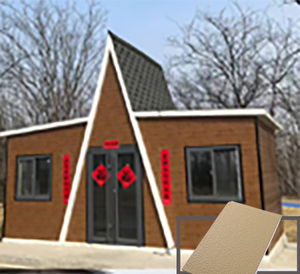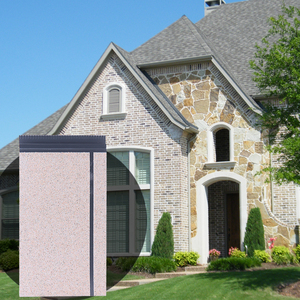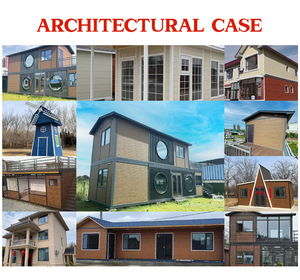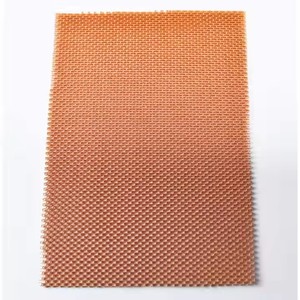
All categories
Featured selections
Trade Assurance
Buyer Central
Help Center
Get the app
Become a supplier

(11438 products available)







































Honeycomb panels are composite materials made of two thin layers of metal (such as steel, aluminum, or plastic) and a core that connects them. This core is designed like a honeycomb, which gives the panel its name. These honeycomb sandwich panels are lightweight but very strong and stable. They are used in different industries and applications where strength and stability are needed without being too heavy.
Metal honeycomb panels are made from different types of metals. The most common ones are:
Honeycomb panels can also be made from other materials besides metals. These non-metal honeycomb panels include:
Honeycomb panels can also be classified based on their core structure:
Honeycomb sandwich panels have become an essential building material in construction because of their high strength and lightweight characteristics. Their thermal insulation and structural integrity make them favorable for use in various applications.
Functions:
Structural Support
Honeycomb panels provide structural support for roofs, walls, and floors in buildings and other structures. Their rigidity and strength allow them to distribute loads and pressures evenly. This function is essential in applications such as modular homes and storage containers.
Insulation
Insulation is one of the primary functions of honeycomb panels. The air trapped in the honeycomb core acts as an insulator, preventing heat transfer. This makes honeycomb panels with glass fiber reinforced plastic layers ideal for energy-efficient buildings and temperature-controlled storage facilities.
Segmentation
Segmentation involves using honeycomb panels to create rooms and compartments within a structure. Their flexibility allows them to be used to create customizable interior walls and partitions. For instance, honeycomb panels are used in office buildings to create walls and partitions that are cost-effective and easy to install.
Soundproofing
Honeycomb panels shield against noise pollution in buildings located in noisy environments. Their core structure absorbs sound waves, reducing the amount of noise that passes through.
Features:
Lightweight
Honeycomb panels are often lighter than other solid panels made from the same materials. For example, an aluminum composite panel is lighter than a solid aluminum panel of the same thickness. This makes them easy to handle and cost-effective, minimizing transportation and installation costs.
High Strength
Although they are lightweight, honeycomb panels possess high strength and rigidity. The load-bearing honeycomb structure core provides strength, making these panels capable of withstanding impact and high loads without sagging or bending. This feature makes them ideal for constructing truck bodies and trailers.
Thermal Insulation
Thermal insulation prevents heat transfer, which keeps buildings warm in winter and cool in summer. This makes honeycomb panels with polyurethane cores energy-efficient. For example, these panels are used to construct cold rooms and freezer storage facilities.
Easy Installation
Honeycomb panels are easy to install due to their lightweight and prefabricated nature. For instance, they can be fitted into a structure using simple hoisting equipment without requiring scaffolding or other support systems.
Versatility
These panels are versatile and can be used in different applications across different industries. They are used in construction, marine, automotive, aerospace, and transportation.
The honeycomb sandwich panels have various applications across different industries and for multiple purposes. Their versatility makes them a preferred choice in construction and other fields due to their lightweight, strength, insulation properties, and environmental sustainability. Below are some common usage scenarios:
Construction and Building
These panels are commonly used in the construction industry. They offer a cost-effective solution for constructing energy-efficient buildings. Their insulation properties reduce energy consumption, making them ideal for environmentally-friendly construction projects. Additionally, the panels are used for prefabricated construction. Honeycomb panels are used in prefabricated and modular construction to create lightweight and easily transportable building components. This reduces on-site construction time and labor costs.
Cold Storage Facilities
Honeycomb sandwich panels are used in the construction of cold storage facilities and refrigerated containers. The panels provide high thermal insulation, which helps to maintain stable temperatures and reduce energy costs in the storage and transportation of perishable goods.
Transportation
Honeycomb panels are used in the transportation industry, including truck bodies, trailers, and rail cars. The lightweight nature of the panels increases payload capacity and improves fuel efficiency. Also, the panels provide thermal insulation for transporting temperature-sensitive goods, such as food and pharmaceuticals.
Interior Applications
Honeycomb panels are used in interior applications such as walls, partitions, ceilings, and flooring. For instance, they are used in creating lightweight and customizable wall panels and partitions in commercial and residential spaces. They are also used in ceiling construction. Honeycomb panels are used to construct lightweight and high-strength ceilings in both residential and commercial buildings.
Furniture and Fixtures
These panels are used in the manufacturing of furniture such as desks, cabinets, and tables. The panels create lightweight and durable furniture suitable for office and home use. Additionally, they are used in creating lightweight storage units and modular furniture that can be easily reconfigured.
Aerospace and Automotive
Honeycomb panels are used in aerospace and automotive industries. They are used in aircraft and automotive manufacturing. The lightweight panels are used in constructing vehicle components such as body panels, interior lining, and cargo floors. Honeycomb panels are also used in manufacturing aircraft components, including wings, fuselage, and tail sections. Their strength-to-weight ratio improves fuel efficiency and payload capacity.
Solar and Energy
These panels are used in the construction of solar energy systems. They provide a lightweight and strong platform for mounting solar panels. Additionally, honeycomb panels are used in constructing energy-efficient and lightweight solar-powered structures such as bus shelters and charging stations.
Evaluate the Application Needs
Assess the requirements of the intended application. For structural purposes, load-bearing capability is important. In this case, a honeycomb core with high-strength materials like cardboard or aluminum is ideal.
Consider insulation requirements. For applications where thermal or acoustic insulation is a priority, a core with specific insulating properties should be chosen. This can be polyurethane foam, polystyrene, or mineral wool, depending on fire rating requirements.
Examine environmental conditions. Consider the environmental conditions where the panels will be installed. If they will be exposed to high moisture levels, choose panels with water-resistant facings or cores. High-density polyethylene (HDPE) or galvanized steel are good facing material options for moisture-rich environments.
Evaluate Core Materials and Panel Thickness
The core material directly impacts the panel's performance. Honeycomb cores provide lightweight and rigid structures. Polystyrene cores are cost-effective and offer good insulation. Polyurethane cores provide higher insulating values. Consider the panel thickness. Generally, the thicker the panel, the better the structural integrity and insulation values. Balance cost and weight savings with thickness for lightweight structures or applications.
Consider Facing Materials
Evaluate the durability and aesthetics of facing materials. Choose durable facing materials for longevity. For example, fiberglass-reinforced plastic (FRP) is ideal for high-impact areas, while aluminum or steel offers structural support and weather resistance.
Consider the aesthetics. Choose facing materials that provide the desired aesthetics for visual appeal. Options include painted metal, textured surfaces, or wood finishes.
Evaluate Costs and Suppliers
Get Quotes: Request detailed quotes from various suppliers. Analyze the honeycomb sandwich panel price breakdown, considering panel specifications, materials, and any additional services like customizations or coatings.
Long-Term Value vs. Initial Cost: While comparing prices, consider the long-term value rather than just the initial cost. Cheaper options may have lower durability or performance. Balance price with quality.
Supplier Reputation: Research the suppliers' reviews, past projects, and customer testimonials. Reliable suppliers offer consistent quality and good customer service.
Q1: How is the honeycomb sandwich panel made?
A1: The thin steel plate sandwich panel is made by welding the outer steel sheet to a steel ring frame. This creates a shell. Then a core is inserted. This core can be a honeycomb structure, polyurethane foam, or mineral wool. The core supports the steel sheets and provides insulation. An adhesive is used to bond the core securely between the steel sheets. Once the core is in place and the adhesive cures, the panel is complete and very strong.
Q2: What does the core material do?
A2: The core material serves several important functions. It supports the outer metal sheets and gives the panel its thickness. Different core materials provide insulation. For example, honeycomb cores have air spaces that reduce heat transfer. Polyurethane foam cores offer good thermal insulation. Mineral wool cores also insulate and have fire-resistant properties. The core material helps make the honeycomb panels lightweight and easy to handle, too.
Q3: Are honeycomb sandwich panels waterproof?
A3: The steel sheets that form the outer shell of honeycomb panels are waterproof. So, the panels resist water. However, the core material may absorb water over time if it is not treated. This could weaken the panels. To protect against water damage, manufacturers apply water-resistant coatings to the core. They also use coated galvanized steel sheets that resist rust. Proper sealing further prevents water from reaching the core.
Q4: What is the lifespan of these panels?
A4: Honeycomb panels last a long time if they are maintained properly. Their outer steel sheets are very durable and can last 30-40 years or longer. The core materials also have long lifespans. Polyurethane foam and honeycomb cores can last 25 years or more. Mineral wool cores have a similar lifespan. To extend their lifespan, the panels should be installed correctly. Users need to conduct periodic inspections and maintenance.
Q5: How does temperature affect the panels?
A5: Honeycomb panels are designed to perform well in extreme temperatures. Their metal sheets do not change shape much when it gets hot or cold. The core materials also have good thermal stability. Polyurethane foam and honeycomb cores maintain their structure over a wide temperature range. This means the panels provide a consistent level of insulation no matter the weather.